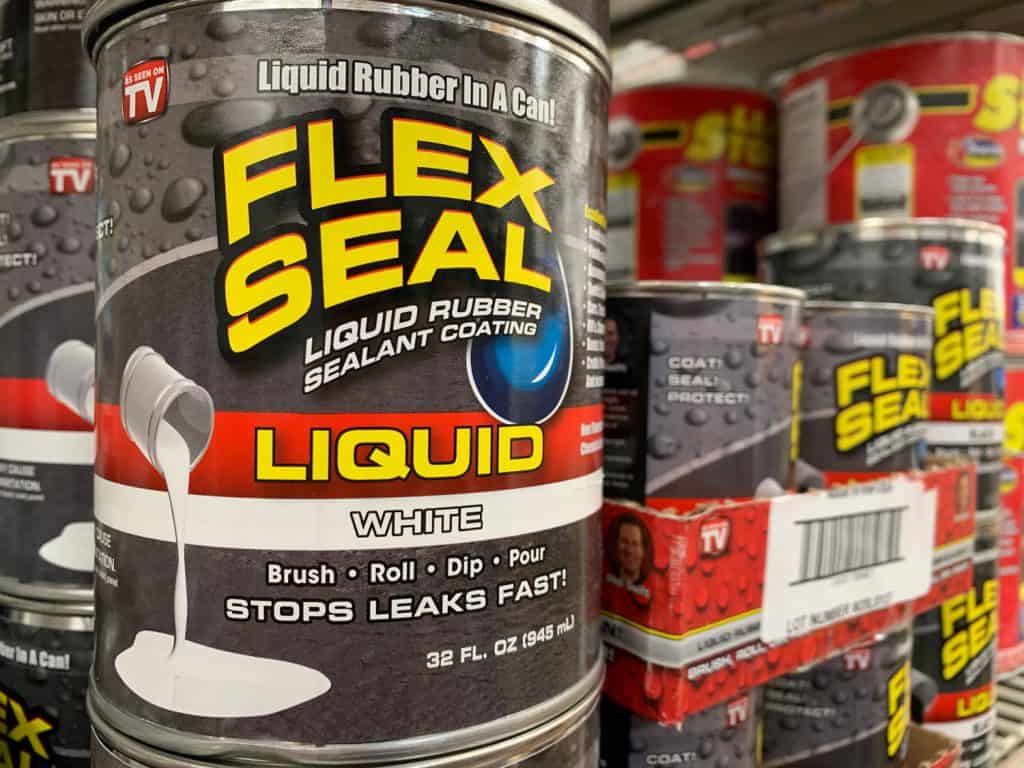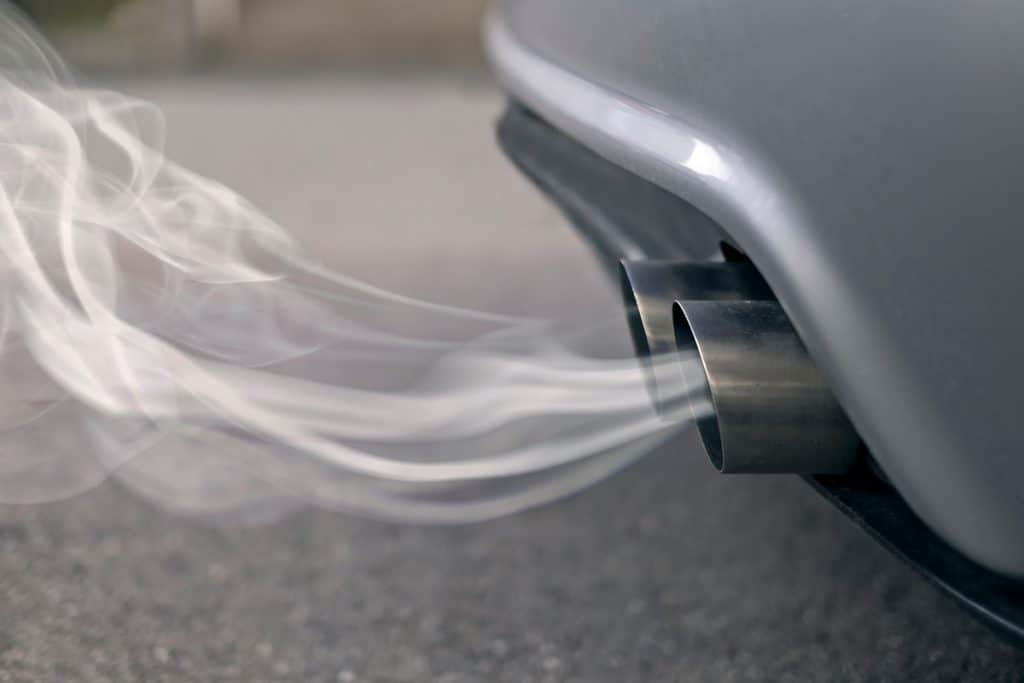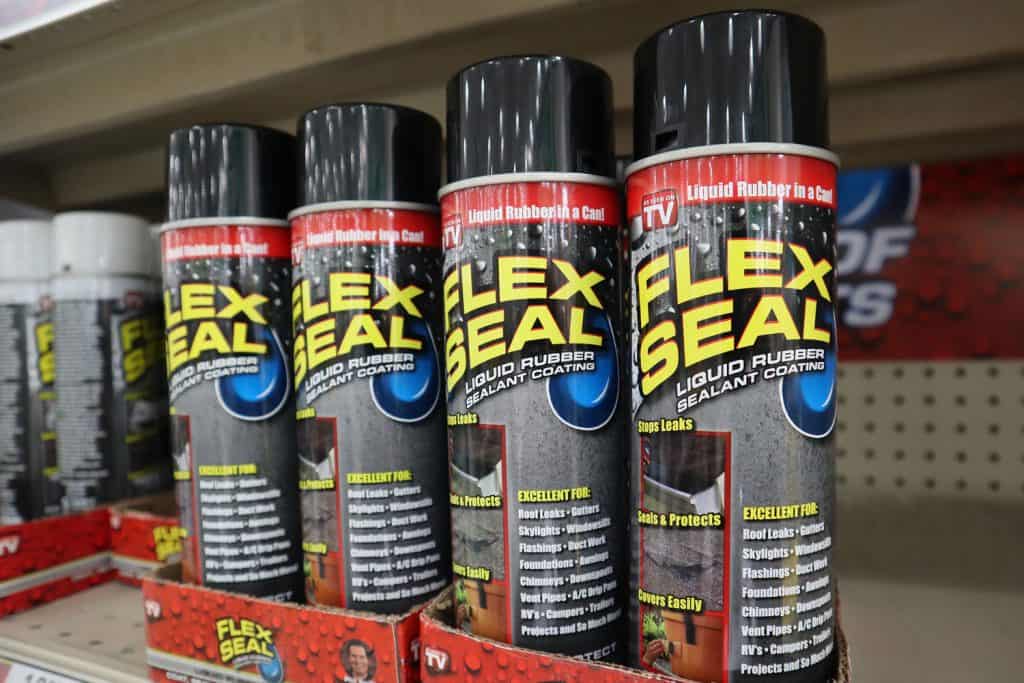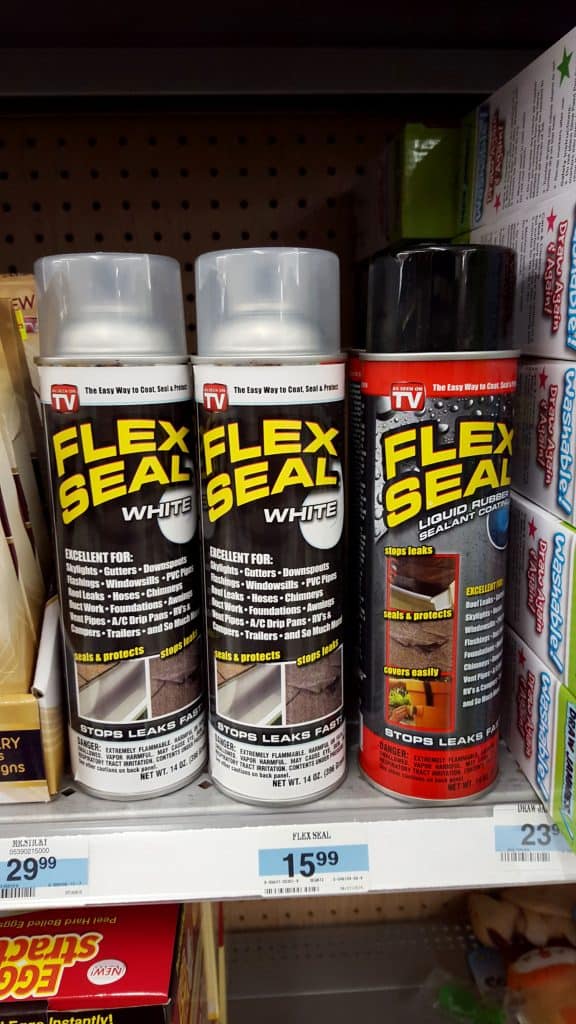Can you use the ever-dependable Flex Seal when you need to do some minor repairs on your car? That's what we'll talk about in this article. We asked vehicle experts for their guidance on this matter, and here's what we learned from them.
You can use Flex Seal for minor repairs in your car, securing its exterior trim, sealing the windows and door jambs, and adding an extra layer of protection to various parts constantly exposed to harsh environmental conditions. However, it is not advisable to use it for fixing leaks in your car exhaust as it is continuously subjected to high heat and pressure.
Continue reading so we can tell you more regarding the various applications of Flex Seal products on vehicles. We'll also share with you how you can remove Flex Seal from your car. This article will also answer if Flex Seal is hazardous and if an exhaust leak is bad for your engine. Let's begin!
![View of a Flex Seal and Flex Tape endcap, Can Flex Seal Be Used On Cars? [Even On Exhaust]](https://vehq.com/wp-content/uploads/2022/01/Can-Flex-Seal-Be-Used-On-Cars-Even-On-Exhaust-683x1024.png)
Can you use Flex Seal on a vehicle?

Flex Seal is a very handy product to have. It has various uses in the household for repairs, sealing out moisture, and weatherizing. But can you also use it on your vehicles?
Flex Seal, or liquid rubber in a can, works great on different surfaces such as plastic, glass, fiberglass, metal, and aluminum among others. Since these materials are often used in vehicles, you can also use Flex Seal for your car repairs and more.
Here are the many ways that you can use Flex Seal on your car:
- Minor repairs: You can use Flex Seal products to reattach your side view mirror and repair the cracks on the headlight casing so that no water can get inside.
- Securing exterior trim: You can secure your car's trim, weatherstripping, and other exterior details with Flex Seal waterproof adhesive so that you can be sure that they'll stay in place despite the weather changes.
- Sealing your vehicle: Flex Seal can help seal loose portions around the windows and door jamb to keep the water out.
- Extra layer of protection: You can spray Flex Seal on your car's undercarriage, wheel wells, and truck bed as a protective barrier against rust, rocks, and debris. You can use it on your toolbox to make it waterproof.
These are just some of the uses of this product. The best thing about using Flex Seal is that it lasts a long time. Once it dries, it forms into a rubberized material that won't crack or break even under extreme weather conditions.
Flex Seal also comes in a range of products that can help you fix other issues in your cars, such as the Flex Tape and Flex Glue, so you can say that Flex Seal is every car owner's best friend.
Check out this product on Amazon.
Can You Use Flex Seal on a car's exhaust?
Some car owners are also wondering if they can use Flex Seal to fix leaks on their exhaust system. Manufacturers don't recommend using this product on car parts that are constantly subjected to high pressure and heat because it will affect its effectiveness, so it's best not to use it on your car exhaust.
If you're going to use Flex Tape to patch a hole in your exhaust system, take note that this is only a temporary solution. The tape would likely melt over time, given that these parts can get really hot.
It is better to use exhaust tape; although, car owners from a popular Q&A website suggest that you have the leak fixed at the auto shop right away to avoid further damage.
Check out this exhaust wrap on Amazon.
Is an exhaust leak bad for your engine?

A vehicle's exhaust system is responsible for two things: it reduces the emission of harmful gases and absorbs the noises that the engine makes. It is composed of several parts that all work together to accomplish these tasks. This includes the exhaust manifold, catalytic converter, muffler, resonator, and tailpipe.
When there is a leak in any of these components, you should have it fixed immediately to avoid further damage to your vehicle's engine.
It can cause your car to emit toxic gases that can find their way to your car's cabin. Overexposure to these gases can literally kill you. They are also bad for the environment.
Excess oxygen can also enter your engine's combustion system causing it to malfunction. Extra fuel is added to the combustion mixture but it won't be burnt and can make its way to your car's exhaust stream. This can be destructive to your catalytic converter and O2 sensors. You will also notice that your car has poor gas mileage and your engine's power is significantly reduced.
A leak in the exhaust system can also remove heat that's being produced in the combustion chambers. As it is carried away, it passes through the valves in the exhaust manifold which aren't designed to handle excess heat leading to internal engine damage.
Exhaust leaks can cause significant damage to your engine and the repairs can be costly if you don't have them treated right away.
How do I remove flex seal spray from my car?
If you accidentally get Flex Seal on other parts of your car that you're not supposed to, you'll realize that it is rather hard to remove. But don't worry, here are some products that you can apply on the surface to remove those traces of Flex Seal.
The manufacturers recommend using toluene or paint thinner if the affected area is on the car's exterior. You just need to put a little amount and then rub it vigorously. It's best to try it on a small area of your car first. Too much of it can damage your car's paint.
Click this link to find this product on Amazon.
If there's a Flex Seal drip in the interior of your car, you can try mineral spirits to remove the stain. No need to scrub the surface, just blot out the stain and dry it with a clean cloth afterward.
Check out this product on Amazon.
Other products that you can try according to our experts are WD-40 and Goo Gone. Just spray them on the affected surface, let them sit for a few minutes, and wipe them off with a clean cloth. You can also try putting a hot towel first over the surface to soften and loosen the adhesive so that it's easier to remove.
Is Flex Seal hazardous?

Since Flex Seal offers a range of products for various uses, there will be many times when you will be exposed to these products should you decide to use them. It is always advised to exercise caution when handling these products even though the manufacturers say that they are not hazardous and can be used around plants and animals safely.
These claims are true to a certain extent. Flex Seal is non-hazardous once it has completely dried on the surface that you're fixing. But while you're using it, you should be very careful as it could be toxic to you and especially if there are children around you.
Inhalation of its fumes and contact with the eyes and skin can cause irritation and other adverse health effects. Of course, this product shouldn't be ingested since it is poisonous.
Proper handling and storage are recommended so that you can enjoy the benefits of this product without compromising your health and safety.
Final Thoughts

Flex Seal is always handy to have, not just for your home repairs but also for your car. You can use it for various purposes from fixing your side view mirror to protecting the undercarriage of your car. Just don't use it to fix leaks on your car exhaust as this job isn't for DIY and is best handled by professionals.
For more vehicle resources, you may visit the following links:





